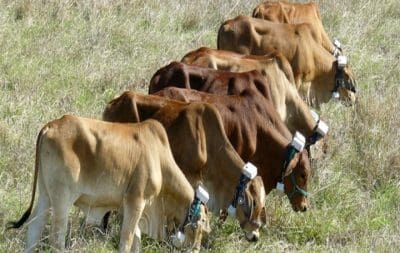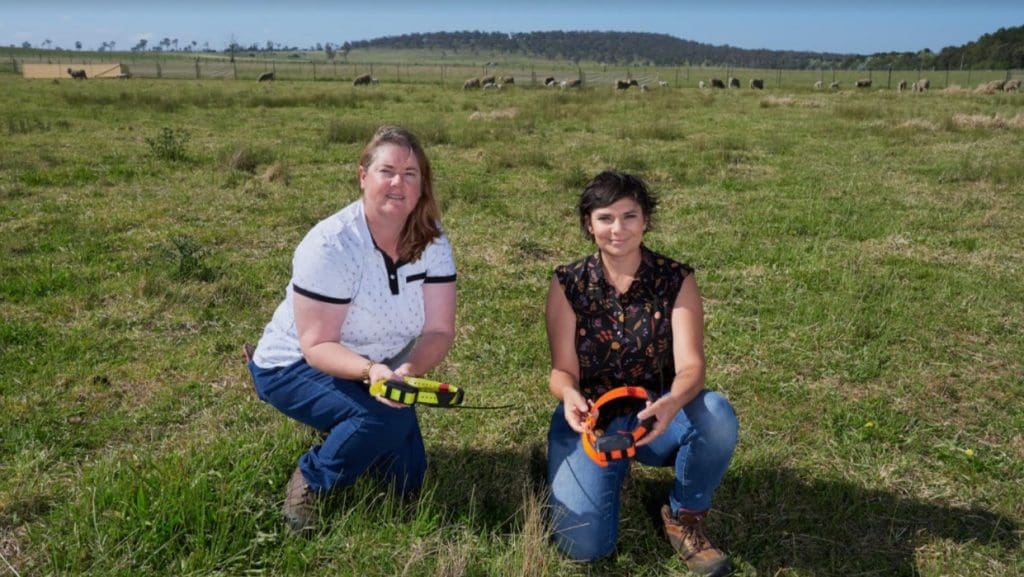An inquiry has been launched this week through the NSW Legislative Assembly Committee on Investment, Industry and Regional Development examining a proposed amendment to the Act.
 The inquiry proposes to examine the animal welfare, biosecurity and community safety implications of permitting virtual fencing, under the Prevention of Cruelty to Animals Amendment (Virtual Stock Fencing) Bill 2024.
The inquiry proposes to examine the animal welfare, biosecurity and community safety implications of permitting virtual fencing, under the Prevention of Cruelty to Animals Amendment (Virtual Stock Fencing) Bill 2024.
The Bill was introduced in February by the NSW member for Orange, Philip Donato, aiming to change the law to permit the use of virtual stock fencing devices for the purposes of confining, tracking and monitoring livestock.
Virtual fencing systems typically use GPS-enabled animal-mounted collars which can deliver an audio signal or a mild electric shock if an animal strays too close to a virtual fence line created by the owner. Animals quickly recognise and respond to the stimulus, avoiding perimeter areas and further shocks.
The proposed amendment would exclude virtual stock fencing devices from the offence prohibiting the use of certain electrical devices on animals.
Many virtual fencing trials have involved cattle, but University of New England research has also found virtual fencing using audio signals and electric pulses to train sheep to respect a boundary is far less stressful than other standard farming practices.

UNE PhD student Tellisa Kearton, left, and post-doctoral researcher Danila Marini with sheep collars used as part of the virtual fencing research. Image – Supplied.
Chair of the NSW Parliament regional investment committee Roy Butler said the inquiry would examine any impact the new law might have on farming practices, biosecurity, animal welfare and the broader environment, and whether there were any risks or downsides.
“With farmers facing increasing challenges from natural disasters and fluctuating markets, its important that we examine virtual fencing, and the provisions of this bill can help our farmers and the broader environment,” Mr Butler said.
In his first reading of the amendment to NSW Parliament last year, Philip Donato said he, along with many livestock farmers and respected peak farming bodies, believed the bill was important in advancing livestock production and land management.
“I urge my fellow members to support this bill. It is a pivotal legislative change—a change that has the potential to revolutionise the agricultural landscape of our state and support our farmers in advancing livestock farming, in keeping with the twenty‑first century,” he said.
Unsurprisingly, virtual fencing did not exist in 1979 (when the Act was first drafted), he said.
“If it had, the relevant section, preventing the use of certain electrical devices on animals, likely would have been altered,” he said. “It…currently prevents virtual fencing devices being applied to stock animals in New South Wales.”
The energy of the stimulus delivered by the collar was less than that of a standard electric fence, Mr Donato said.
“The history of this technology is fascinating and illustrates the advancements that have been made in agriculture and technology. It is the product of meticulous research and development by not only the private sector but also the CSIRO. Its work in the field of virtual fencing has been instrumental in bringing this technology to life and providing legitimacy to this advanced farming practice. It is a testament to the power of collaboration between industry and science,” he told Parliament.
“Why is it imperative that we embrace this technology in New South Wales? The benefits are manifold, and they extend to our farmers, our economy and our environment. First and foremost, virtual fencing offers our livestock farmers a tremendous boost in efficiency and productivity.
“Traditional fencing is not only costly to install and maintain but also limits the flexibility of grazing areas. Recent flood and bushfire events have exacerbated the impact and costs associated with traditional fencing. With virtual fencing, farmers can adjust internal boundaries and move their livestock with ease, reducing labour and time requirements. This not only makes their operations more cost effective but also allows them to focus on other critical aspects of their business.”
Submissions are due by 17 May, and the final report is due by 27 October.
The inquiry terms of reference are available on the Committee’s website.



HAVE YOUR SAY